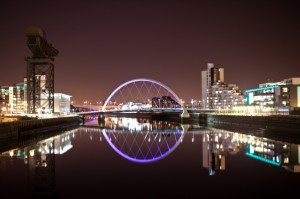 A Look at Glasgow’s Changing Demographic Profile
A Look at Glasgow’s Changing Demographic Profile
Although Edinburgh is Scotland’s official capital, Glasgow has by far the region’s largest population. According to data published in December 2013 by the National Records of Scotland office, Glasgow has a total population of just over 595,000 people. This means that the city is home to approximately 11 per cent of the Scottish population.
Glasgow’s demographic make-up has certainly changed over the years. During the early 20th century the city attracted many Eastern and Southern European immigrants. The city’s population (along with its boundaries) increased considerably during the first few decades of the century, peaking at more than 1 million people during the 1950s. However, a long period of economic and social decline ensued, resulting in a steady population decrease between 1986 and 2005. During that period, the city’s population declined by 5,000 people every year, but a period of stabilisation followed during the mid-2000s.
Although over the past five years there has been a large number of young people moving to Glasgow from other parts of the UK and Europe, fertility rates have been decreasing, giving rise to a generalised decline in population numbers. This may be due to the fact that a significant percentage of Glasgow’s young population are professionals who are postponing parenthood. Glasgow’s City Council reports that the areas that have suffered the highest levels of population loss are Easterhouse, Croftfoot, and Balornock.
A look at Glasgow’s population pyramid reveals that the city’s population is predominantly young, since more than 24 per cent of its residents are aged between 16 and 29 years old. This figure contrasts with the Scottish average for this age group, which is barely 18 per cent. The second largest age group is comprised by people aged 30 to 44 (11 per cent), whereas people aged 75 and over constitute the smallest group, accounting for 6.7 per cent of the city’s population.
In terms of ethnicity, the latest Scottish Household Survey showed that approximately 10 per cent of the population belongs to an ethnic minority group. The white British/Irish group accounts for 87 per cent of the population, whereas the largest non-white ethnic group consists of people of Pakistani and Indian origins.
Despite Glasgow’s decreasing population trends, future projections seem to point at a reversal of this tendency. The local city council estimates that by 2035, Glasgow’s population will increase by 11.3 per cent, reaching 660,000 people.
Economic and Industrial Trends in Glasgow
Glasgow’s econmy has long been associated with manufacturing, since the city was a prominent trading and shipbuilding hub for centuries. However, and as in the case of other predominantly industrial UK cities, Glasgow’s economy experienced a phase of severe decline once the national economy began to shift from being mostly dependant on manufacturing to relying on services. For several decades during the second half of the 20th century, the Glaswegian economy struggled to adapt itself to the new market conditions, giving rise to worrying youth unemployment levels.
However, the de-industrialisation process gave rise to a period of economic growth and prosperity, to the point that nowadays Glasgow’s economy is considered a model and a clear success story. Currently, the city’s economic output exceeds £17 billion. Approximately 25 per cent of Scotland’s most important business firms are based in Glasgow, and in total, more than 13,000 businesses operate in the city. Glasgow has 514 square mile of business and commercial floor space, and several business development and urban regeneration action plans (such as the creation of the International Financial Services District or the Clyde waterfront) have been implemented to boost Glasgow’s international image as a key business location.
At the onset of the recession, there were 419,000 jobs in the city. Unlike in the case of other UK cities, Glasgow has been successful at weathering the economic storm, as currently the city has over 443,000 jobs. It seems realistic to expect that in the near future, the city’s employment offer will match (or even surpass) its historic 1950 peak, when it reached 559,000 jobs.
Glasgow’s booming economy has turned the city into an attractive place to live and work, providing a significant source of employment for other areas in western Scotland. It is estimated that the city employs one fifth of the region’s workforce.
As for Glasgow’s industrial base, the city is clearly a service-dominated economy. Glasgow’s modern industry base is comprised of a large number of companies in the financial sector, which employs more than 100,000 people. With over 125,000 employees, the public sector is also key to the local economy. Manufacturing still employs over 23,000 people, and major firms like Albion Motors, Aggreko, BAE Systems, Clyde Blowers, and Weir Group are based in the city. Recently, the city has also increased its profile as a major centre for the creative industries, as more than 900 firms in this sector now exist in the city. Lastly, Glasgow’s tourist appeal has become an important source of revenues for the city, employing 8 per cent of the local workforce.

